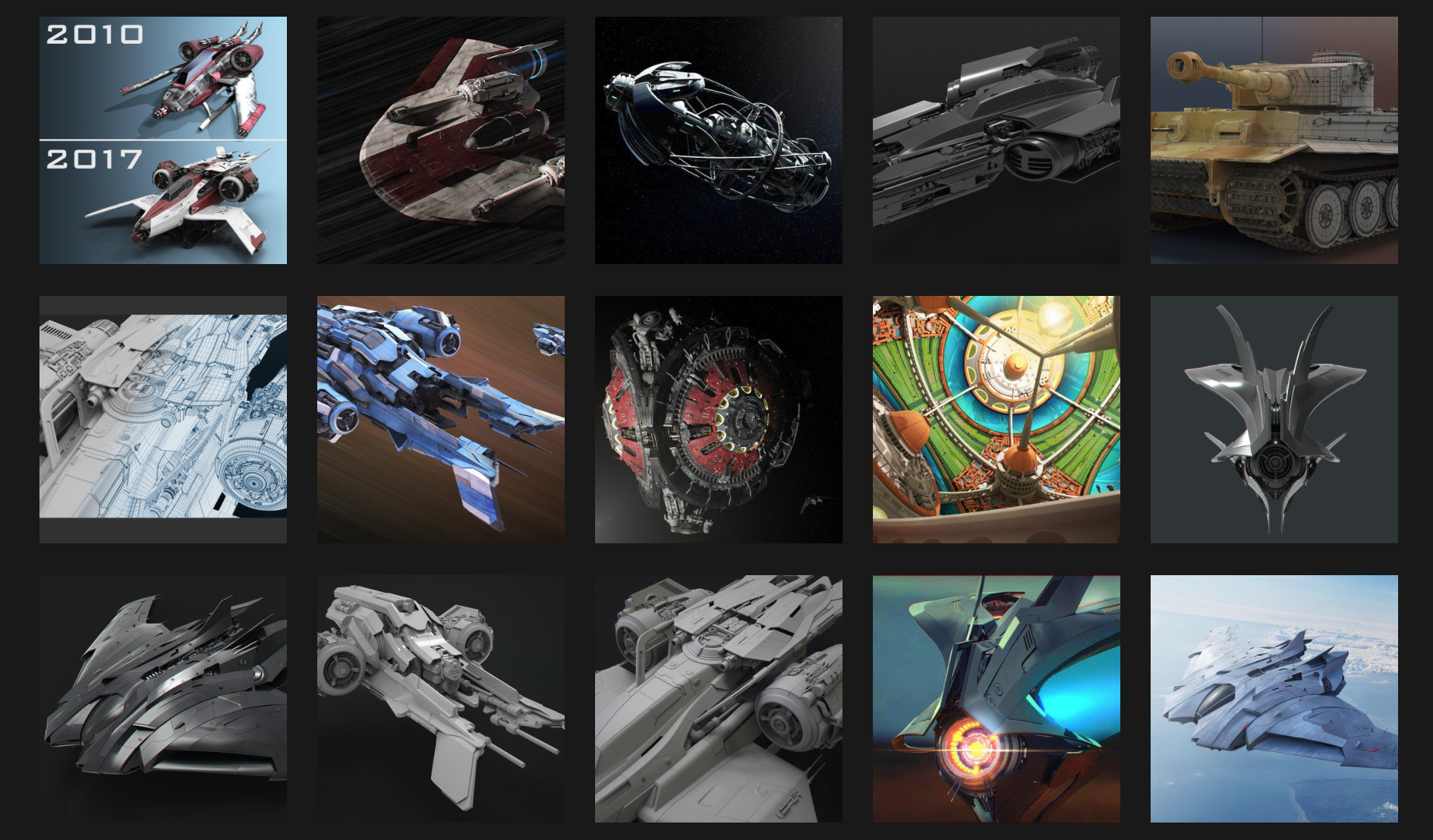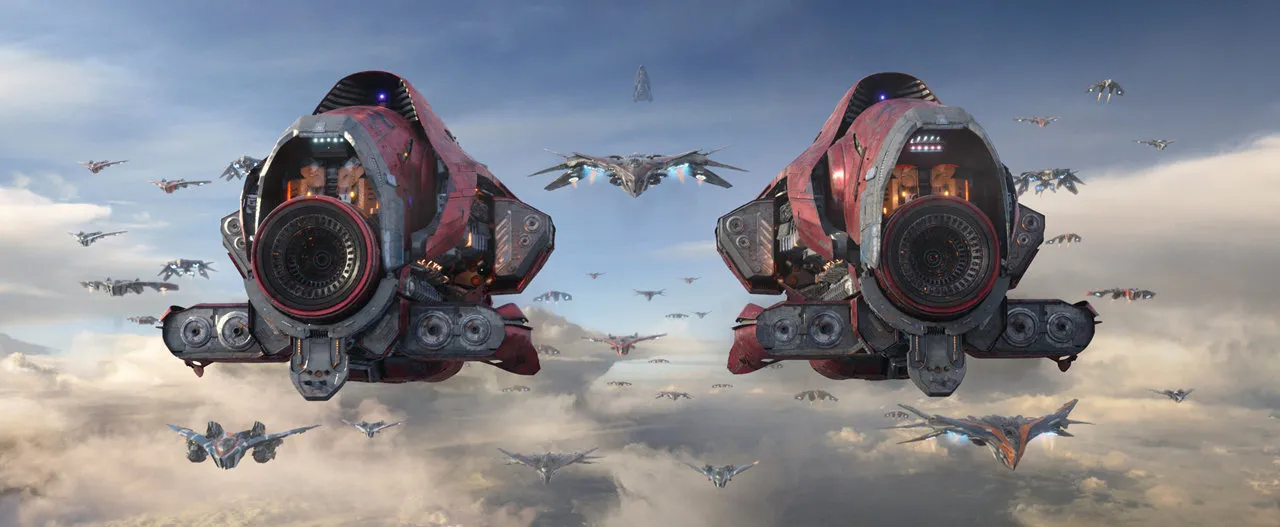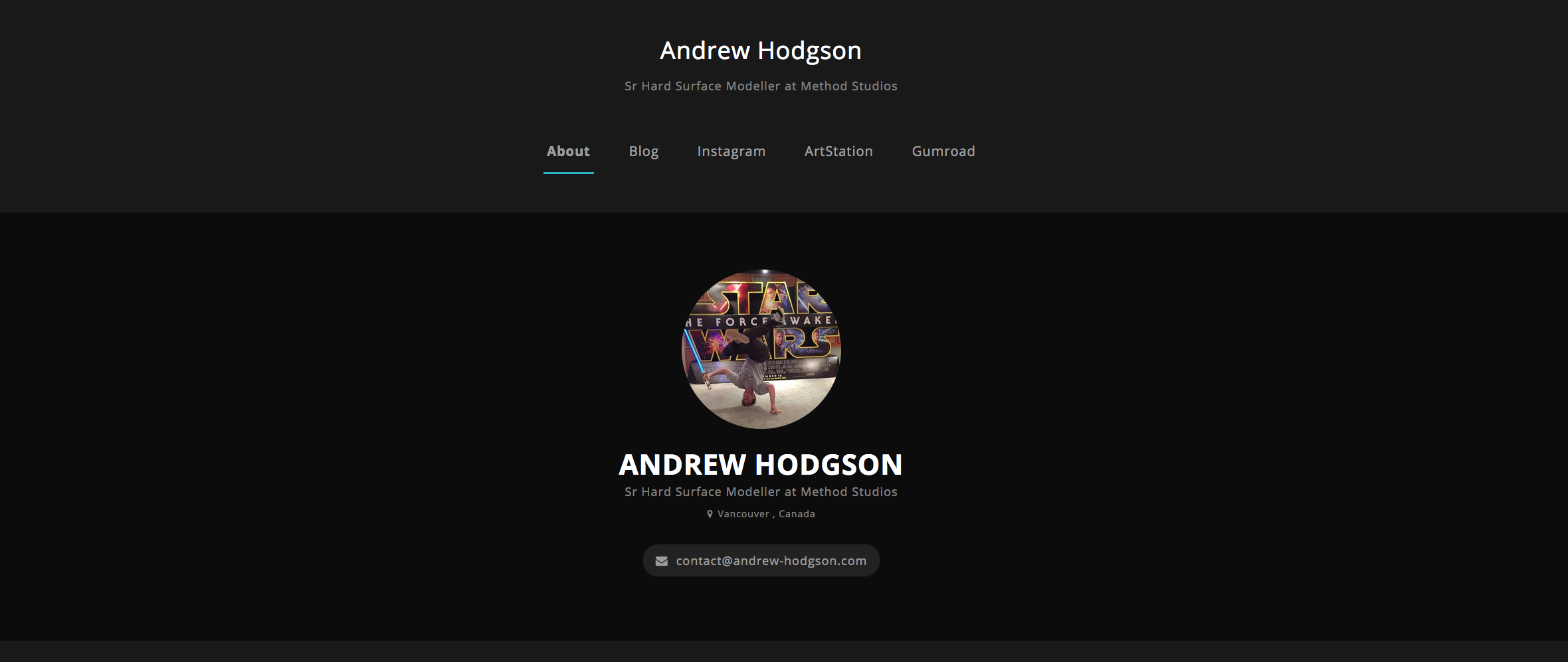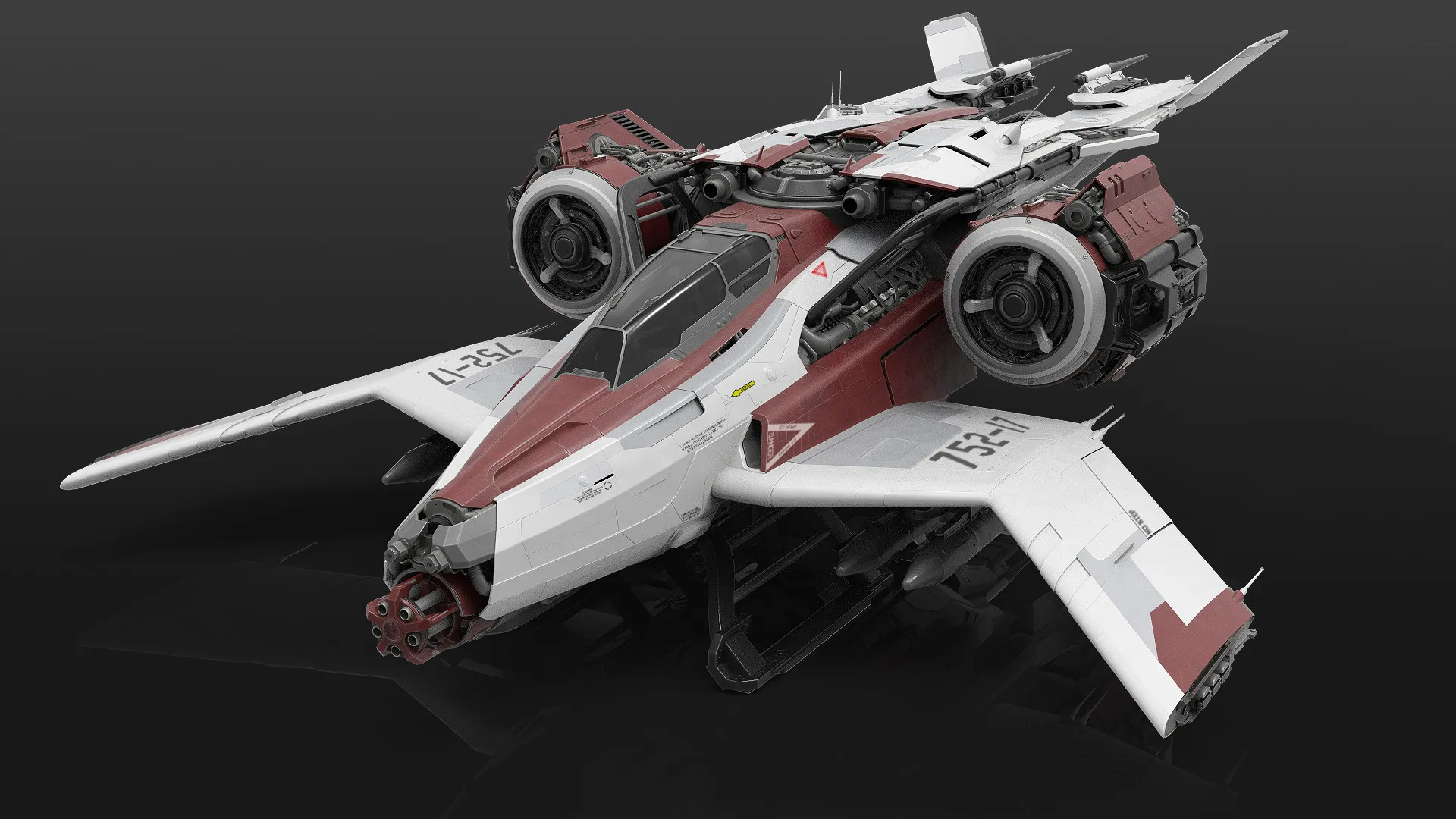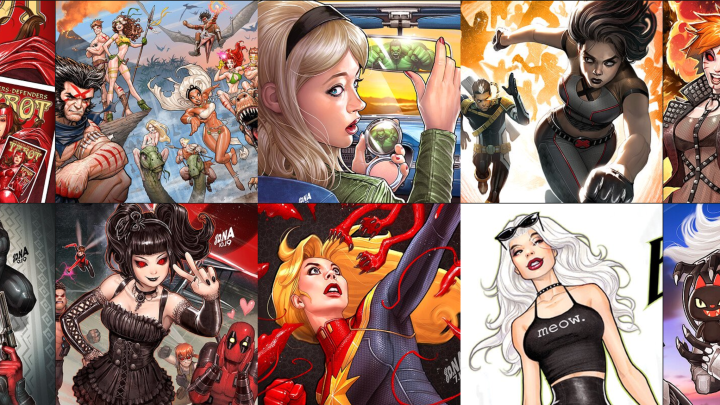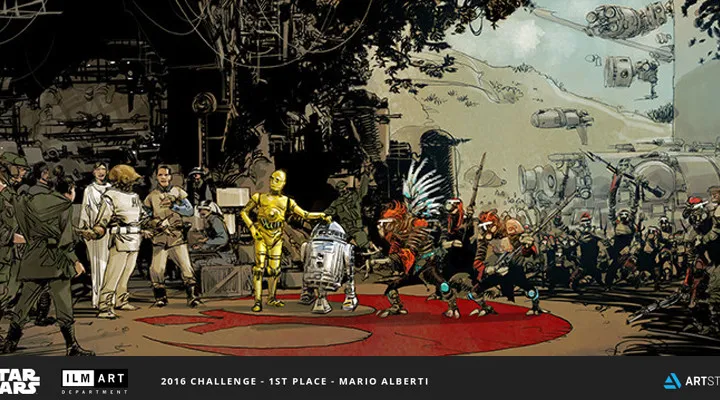Featured Pro Portfolio: Andrew Hodgson
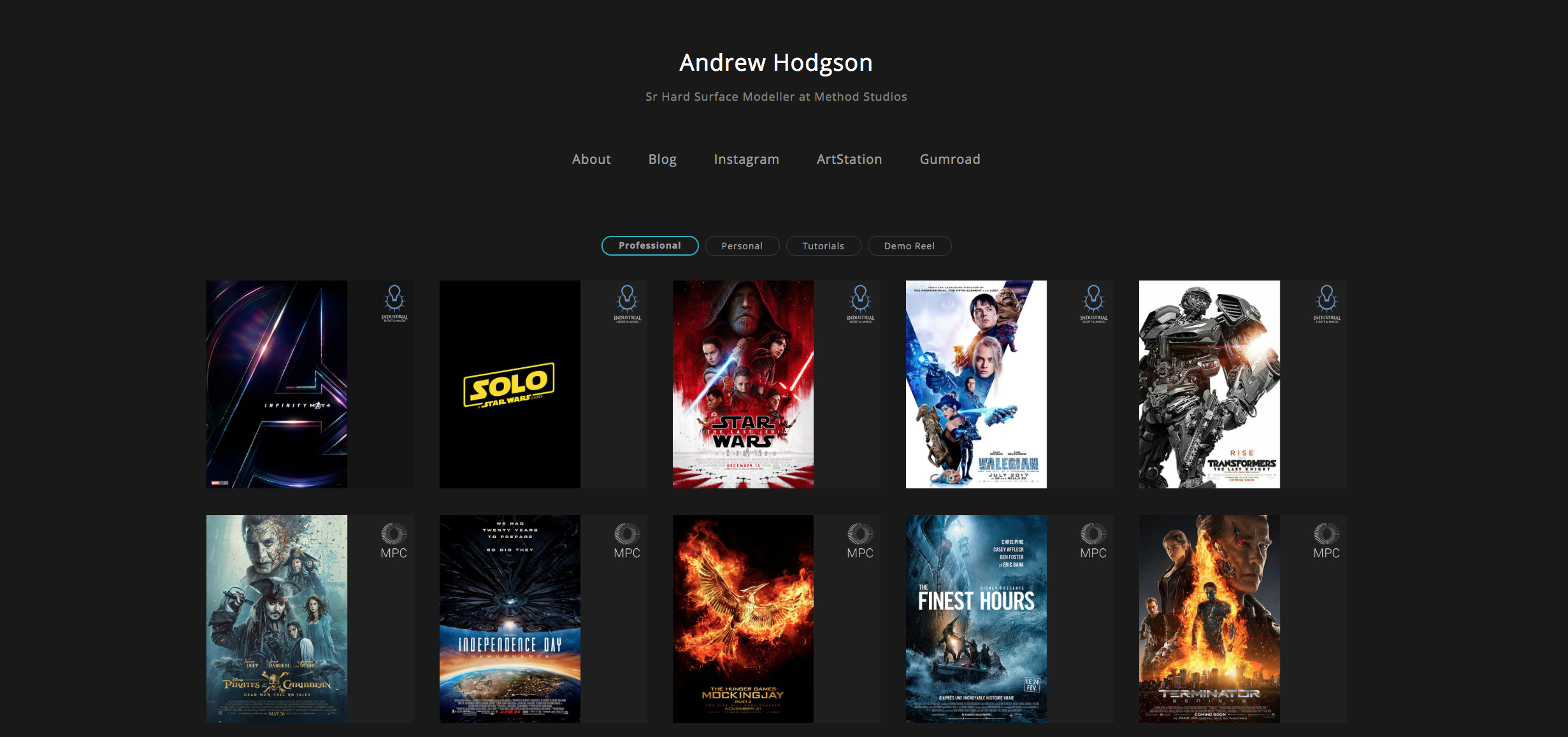 Andrew Hodgson is a Senior Hard Surface Modeller currently working at Method Studios Vancouver, with previous experience at Industrial Light & Magic and MPC. He has worked in the film industry for over 4 years on projects including Star Wars: The Last Jedi, Guardians of the Galaxy, Transformers: The Last Knight and Pirates of the Caribbean: Dead Men Tell No Tales, to name a few.
Andrew Hodgson is a Senior Hard Surface Modeller currently working at Method Studios Vancouver, with previous experience at Industrial Light & Magic and MPC. He has worked in the film industry for over 4 years on projects including Star Wars: The Last Jedi, Guardians of the Galaxy, Transformers: The Last Knight and Pirates of the Caribbean: Dead Men Tell No Tales, to name a few.
Check out Andrew’s ArtStation-powered portfolio website.
Despite being busy working on Hollywood films, Andrew also regularly participates in ArtStation Challenges and shares WIPs and assets on his integrated ArtStation Pro blog.
“ArtStation has become so integrated within our industry that I was simply posting more and more of my work here and starting to neglect my own actual website. The cool thing about having Pro Is now I have moved my domain over to my ArtStation web folio and consolidated where I post my work to one place. I still have the control over what is visible on my ArtStation and what is visible on my website which is very handy.”
In this interview, he gets real about some of the tough challenges working in the industry, how he got his big break and more.
Tell us about one of your most exciting projects.
I would say my favourite project was my first ever job in the film industry, which was Guardians of the Galaxy at MPC. I will always be fond of my experience associated with this film. It was hard for me to get in to the film industry. I had to leave my home in Perth Australia and travel to London to be near the studios. I was lucky enough to get in to MPC as a runner cleaning kitchens and serving clients coffee. From there I pushed them for months until they gave me a chance to be a Junior Modeller and the first project for me to help on was Guardians.
This was the perfect project for me to start my career on because it was nothing but spaceships for me during the 11 month project. I developed my skills immensely in the exact area I wanted to, which is hard surface modeling. I loved the design aesthetic of the film and it would influence my personal projects to this day. I had a very solid team around me with leads and supervisors I could look up to and learn a lot from. This one project set the groundwork for where my career would go in to the future. I won’t ever forget the feeling of seeing my work on the screen for the first time and seeing my name in the credits.
What is the most challenging part about your job?
The most challenging part of working in the film industry is putting all of your passion and energy in to your work, while simultaneously not getting emotionally attached to what you are doing. It is cool to build spaceships all day and look forward to seeing them on the big screen blowing stuff up, but at the end of the day in reality we are hired to make someone else’s product. This can be very hard to deal with when first getting in to the industry and not something you really think about when considering a career in VFX. Films are massive several year long projects with a lot of money involved and VFX is only a minor part of it.
This means we don’t have full creative control over what we are doing and it is something I would advise learning to accept early on. If your supervisor or especially the director want to change or even completely remove your current asset, that you have been working so hard on for months, try not to get sad or angry even if you disagree the decision. Address the feedback and fulfill their vision to your fullest, that is what we are paid to do. This lack of control can sometimes be a good thing though because you may be going in a direction you don’t agree with personally, but you still need to make the asset look good for the film. This challenges you to find a way to make it work, which leads to growth and development of problem solving skills.
Even within our own VFX studio on a show, we are a cog in a very large machine, we aren’t doing our own personal projects. Our assets will go down the pipeline and must follow specific standards that fit the needs of other departments. This can be challenging but also very important as it builds up collaboration and communication skills. It isn’t even uncommon for multiple people to be working on the same asset. Ultimately you need to be flexible enough to bend to whatever the demand of the projects are while putting in all of your passion. However, you also need to be able to know when to back off and detach yourself so as not to become jaded. This is a very demanding industry.
What is your advice for getting your work noticed by studios?
Make your skillset very clear in your portfolio, and tailored to to the job you are after. In most high end VFX houses, people are hired for specific roles unless. Sometimes people may be hired as generalists depending on the studio. Include your best work and take out anything that is not up to scratch. You are judged by your worst work, not your best. Poor work in your folio will lead studios to question your ability. Be aware of the quality around you as this is a very competitive industry.
Be active online. Artists are constantly looking online at sites such as ArtStation and if people come across good work, it is usually talked about and remembered. Connections and reputation are fundamental to this industry and if you can build up an online presence, it can make a massive difference in your career.
You’ve been quite active in ArtStation Challenges. What makes you want to participate time and time again?
Since I work in production, concept is an area I would like to develop my skills in, especially if maybe in the future I wanted to move in to concept. The best thing about the challenges is they put a time constraint on you. As a production artist, this means I have to completely rethink how I will tackle and explore different shapes because I won’t be given the time to flesh things out to a production level. This is why I always enter the concept stage and not the production stage.The competitive aspect of them is also good, you see all this cool work being constantly posted so it pushes you to make sure you get your own work done. The time constraint Is reasonable as well – long enough to get the work done but not too long so that you are working under pressure. The themes are always interesting too. They are completely open to interpretation but still have a strong theme to link everyone’s ideas. I also meet new people in the community every time I do a challenge and make new friends and connections. I feel the challenges are a great way for people to push themselves and explore different ideas.
See more of Andrew’s work on his portfolio website. To learn more about ArtStation Pro websites, click here.
